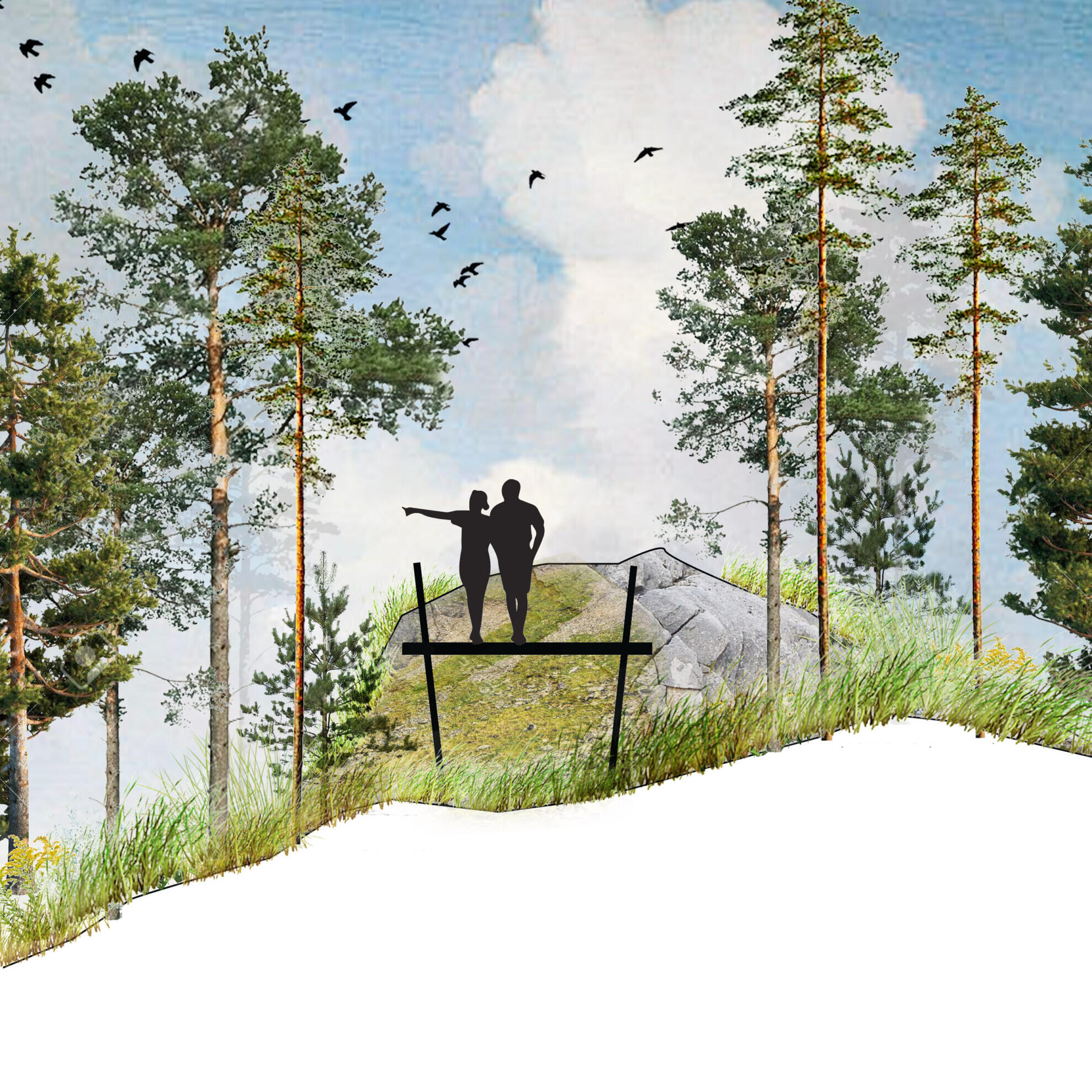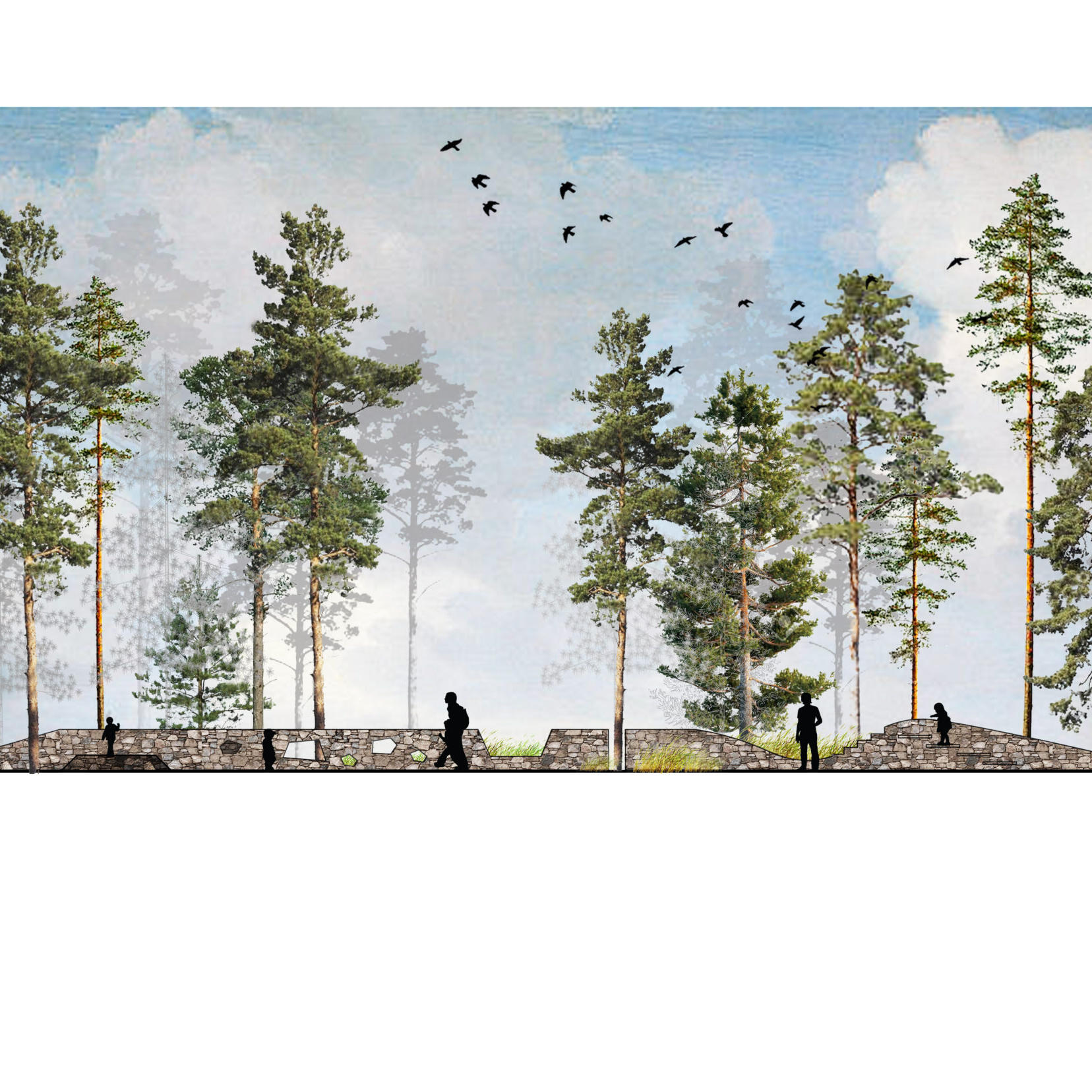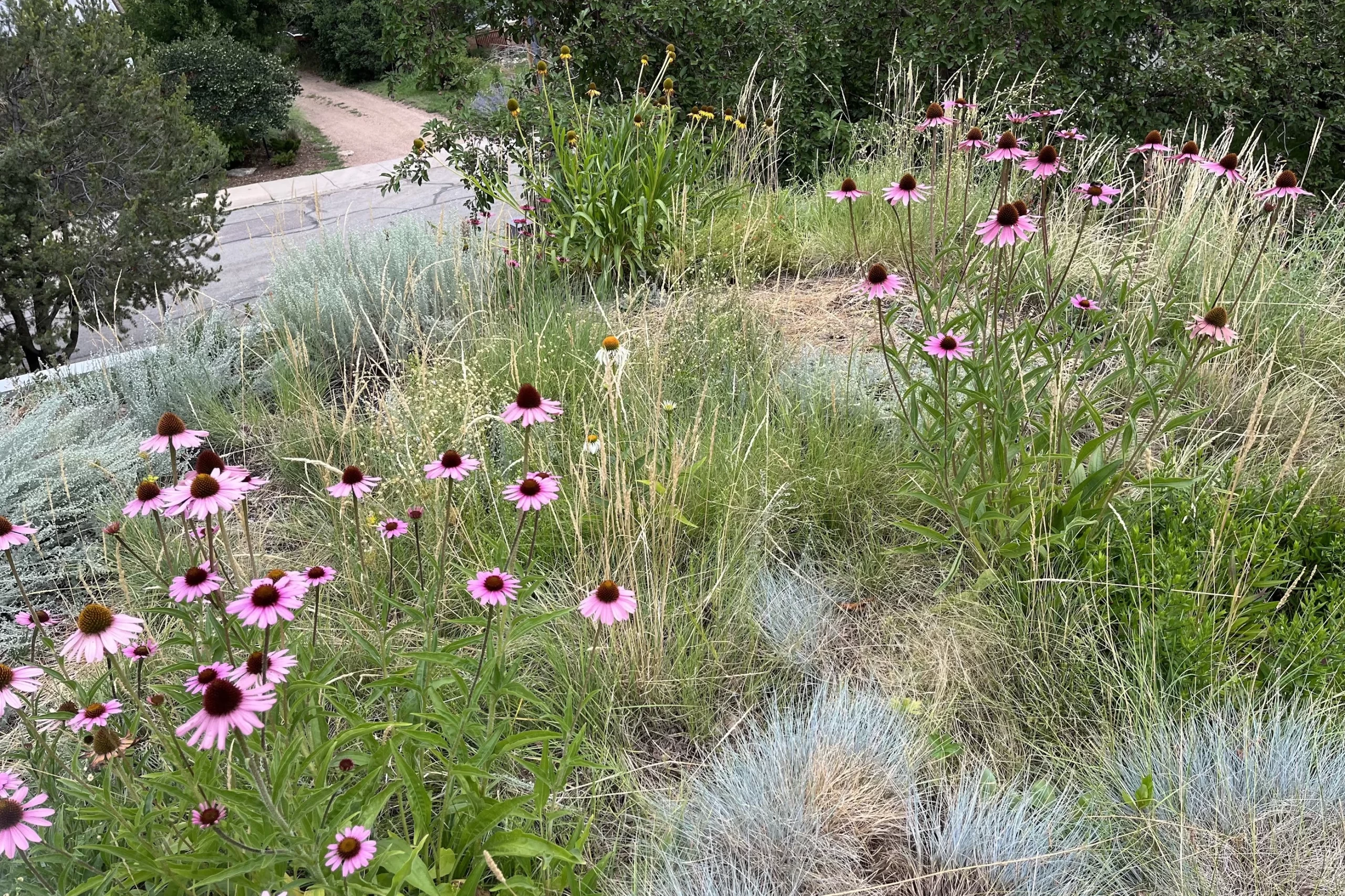Words by: Michelle Britton
Cover Image Render Credit courtesy of Arch11
Immersive Design Process
Playgrounds are an especially delightful part of the immersive design process in our park and public space work. We tap into our inner child during this exercise, reflecting on core memories of curing boredom on summer days, collecting worms at the playground and screaming our lungs out during recess and ask ourselves:
- “What elements make outdoor play so magical for a child?”
- “How can we replicate these elements of discovery and wonder in our current environments for everyone to enjoy?”
- “How do these memories impact us as adults?”
Recalling what it was like to play outside as a child, we know that time in nature is fundamental to the memories we have of unstructured play, discovery and wonder, and that these memories last throughout our lives. Further research suggests the impact is crucial not just in the development of healthy children but also in defining our lifelong relationship with nature, benefiting us into adulthood. One of our greatest joys and deepest passions is designing for the kid in all of us – in/and/with nature – we always look for opportunities to incorporate nature play into our designs, so we can foster this love for nature into adulthood. Nature play can be understood as any unstructured outdoors activity that re-connects us with the natural world, regardless of age – although it typically refers to activities that get children active or thinking actively outdoors, with the end goal of building skills and ability to play without the need for parental or adult control.
Why is Nature Play Important?
As urbanization and suburban sprawl grows across the globe, our relationship with nature is increasingly impacted. While it brings growth, jobs and innovation, it is also responsible for replacing open spaces and forests with concrete and disconnecting us further from our natural environment. In his book Last Child in the Woods, Richard Louv introduces the term “nature deficit disorder” to define the growing alienation from nature that humans are experiencing. Evidence suggests it can lead to decreased attention, mental and physical health issues, and weakened ecological literacy/environmental stewardship in the community at large. As climate change and pollution further threaten our access to the natural world, rebuilding our connection to it must be at the forefront in our education systems, communities and daily lives.
Louv provides a guide on how to foster this connection in children: by providing “nature play” at home, even for those living in dense, urban environments. It can be as simple as inviting native flora and fauna into your life by maintaining a birdbath, replacing part of your lawn with native plants, or keeping a terrarium. It could also be helping your child discover a hidden universe; “find a scrap board and place it on bare dirt. Come back in a day or two, lift the board, and see how many species have found shelter there.” For nature play to be enjoyed to its fullest benefit, frequency is essential and frequency requires that accessible nature play areas be incorporated into children’s environments wherever possible, including in their own backyards and 12th floor balconies.
Another way to increase frequency is by building “nature playscapes” , an alternative to traditional playgrounds of metal and plastic, which introduce children to nature’s benefits in public parks and schoolyards. Logs, tree stumps, boulders, and other organic materials replace jungle gyms to encourage imaginative, non-prescriptive play. It can incorporate native vegetation into children’s outdoor play and learning environments creating more green public spaces, benefiting both humans and the environment.
Learning and Health Benefits for Kids
As natural playscapes have no prescribed dimensions, children engage a greater range of mobility when playing, stretching both their bodies and imaginations. A central tenet of nature play is giving children the freedom to initiate, guide, change, or abandon their play without formal objectives and few rules. This freedom produces many positive outcomes for children, as outlined below:
- Improves creativity and problem solving: natural materials are open-ended and easily adapted. Nature gives children a space to test out new ideas and experiences.
- Offers opportunity for healthy risk-taking: students exposed to the outdoors have the opportunity to climb, run, jump, and more. Experiencing failure and success in this relatively safe environment helps develop physical skills and boundaries.
- Fosters an emotional connection to nature: children who have positive experiences in nature are more likely to become stewards of its care.
- Develops social skills: as different aspects of our personalities emerge through our engagement with the natural world, so do our relationships develop differently out of doors. Here kids socialize gradually, with more choice about how and when.
Studies show swapping out blacktop for trees, gardens, and play equipment derived from nature delivers a raft of emotional and academic benefits to students. Teachers and school administrators report that attendance, behavior, and test scores improve following schoolyard renovations. Improving schoolyards open to surrounding communities helps students, families, and neighbors stay active and healthy. Access to green space and time spent in nature are associated with a number of positive outcomes including reduced stress, less depression and anxiety, improved concentration, lower obesity rates, and reduced blood pressure.
In the wake of the COVID-19 pandemic, combining nature play with outdoor learning became increasingly urgent, shifting the perception of how and where learning can succeed. Outdoor learning, while safer for pandemic-era learning, also provides teachable moments that only happen when interacting with natural elements. The proven mental and physical health benefits of consistent time outdoors highlights the need to increase access to nature play as a learning tool.
Fostering Environmental Engagement and Stewardship
The benefits of nature play are clear for school yards and playgrounds – but we can apply the philosophy to parks and public spaces, benefiting adults and the greater community. Community gateways and gathering spaces, public art works, grass fields, shade structures, vegetable gardens and orchards, and habitat areas encourage an unstructured engagement with nature that benefit any age group and improve urban environments. Founder of Green Hearts Institute for Nature in Childhood Ken Finch writes, “The single most common influence on adult conservation values comes from that unstructured, frequent childhood play in wild settings. The kind of play that saw you start a rock collection, or build a secret fort in the woods, or sometimes just lie in tall grass and watch the clouds float by. The kind of play that caused you to fall in love with nature and that guided you towards your first real sense of place.” Because we know these experiences can powerfully boost the cognitive, creative, physical, social and emotional development of children and can engender deep conservation values into adulthood, Superbloom seeks to include unique nature play experiences and educational opportunities in our projects wherever possible.
Sources:
- Northshore Land Alliance, ‘Nature Play is Good for Children (and Adults Too!)”, northshorelandalliance.org, 2021, https://northshorelandalliance.org/nature-play-is-good-for-children-and-adults-too/
- Richard Louv, “The Last Child in the Woods”, richardlouv.com, https://richardlouv.com/books/last-child/resource-guide/
- We Conserve PA, ‘Nature Play: Nurturing Children and Strengthening Conservation through Connections to the Land’, https://conservationtools.org/guides/135-nature-play
- Penn, ‘What are the Benefits of Natural Play?’ Land8: Landscape Architects Network, land8.com, https://land8.com/what-are-the-benefits-of-natural-play/
- Science Direct ‘Impact of views to school landscapes on recovery from stress and mental fatigue’ https://www.sciencedirect.com/science/article/pii/S0169204615002571
- Trust for Public Land, ‘Community Schoolyards™ projects’ https://www.tpl.org/community-schoolyards
- Frontiers in Psychology, ‘Green Schoolyards in Low-Income Urban Neighborhoods’ https://www.frontiersin.org/ 2018
Superbloom putting Nature Play to practice
At the Wild Bear Nature Center, we worked with the Client to design an interactive nature playscape using locally harvested logs, stumps and branches into a playscape. The logs can be climbed on, a launching point to leap off, or to simply be observed. The educational aspects of visiting the nature center are not confined to the structure – children are encouraged not only to observe the landscape but also to engage with it in a playful way in a space that is made for exploration. (Nederland, CO)
Locally-sourced wood structures will be transformed into custom play structures, and pathways throughout wind through plantings and benches made from locally harvested stone to either be played or rested upon at our Mill Creek Park design. (San Miguel County, CO)










